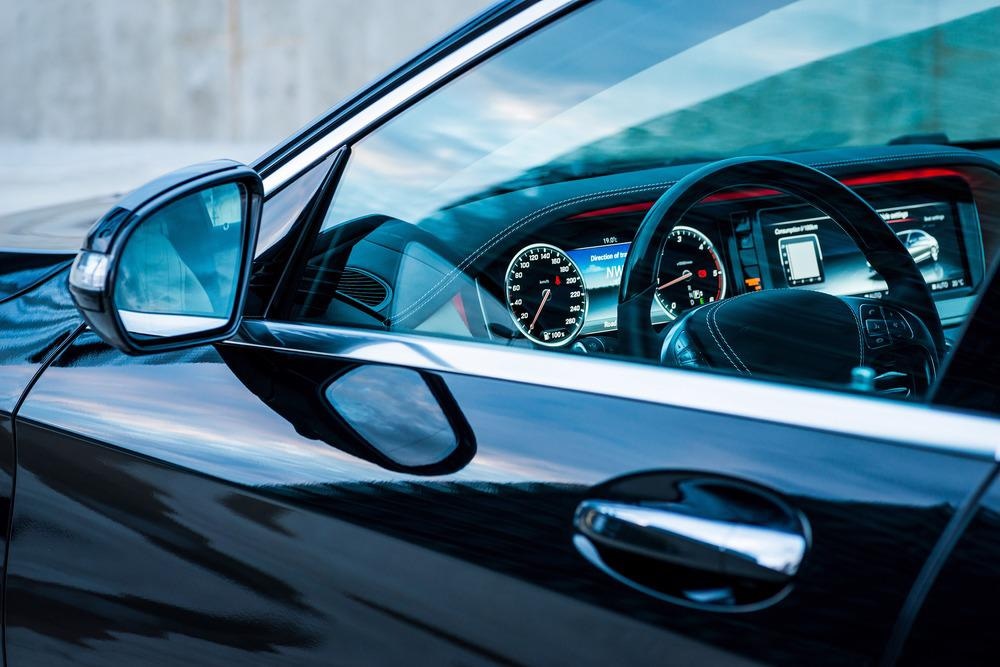
Image Credit: Room 76/Shutterstock.com
With automated driver assistance systems focused on preventing accidents by identifying hazards outside a moving vehicle, manufacturers and regulators are now looking at safety measures intended to monitor what is occurring inside the vehicle.
Israel-based radar technology company Vayyar Imaging recently introduced the world's first full-cabin monitoring sensor system comprising a single sensor that is capable of monitoring the entire cabin of a passenger vehicle, covering the driver as well as all passengers.
The novel sensor detects the presence of a child and offers seat belt reminder alerts, both of which are required for meeting stringent European safety regulations set to take effect by 2025. The system also senses the presence of any occupants, classifies them based on size, and identifies their body position.
How is the Israel-Produced Radar Sensor Different from other Sensors?
Other systems typically use two to three sensors to cover an entire cabin, which can increase costs. This legacy approach typically means more wiring and integration work.
A single-sensor system also simplifies installation in vehicles with a sunroof, which significantly complicates multi-sensor systems.
The Vayyar sensor covers the entire cabin of a vehicle in all lighting and weather scenarios. Unlike a camera-based system, the world's first full-cabin monitoring sensor ensures a high level of privacy. The sensor system uses 48 transceivers to achieve high resolution and an extremely wide field of view. As a key safety feature of any vehicle, the platform enables the identification of occupant status, optimal airbag deployment, and intruder detection.
Vayyar's 3-row Single-chip In-cabin Platform
Video Credit: Vayyar Imaging/YouTube.com
Increased Interest in Interior Radar
Radar-based automotive sensors can be quite compact and are easily installed on the headliner of almost any passenger car to scan the cabin below. When placed inside a driver's seat, this type of sensor can recognize minor movements in the body that could easily be translated into a respiration rate. This capability opens up a range of new safety options to deal with a driver that suddenly becomes incapacitated.
One startup called Caaresys has described a radar-based automotive sensor that can keep track of the heart rate and respiration of all occupants in a cabin.
The interior of a vehicle is often cramped and full of physical obstacles to a scanning system. Radar offers the advantage of seeing through objects that would block the view of a camera. Even though a lot of the present work is targeted at human-driven cars, radar technology could identify passenger positioning driverless cars, which may have different seating layouts than the traditional all-forward-facing setup. In such a design, airbags and safety systems could use radar to respond based on how each individual passenger is facing.
A single-unit automotive sensor such as the new Vayyar system can also be used in multiple innovative applications at the same time, effectively replacing several single-function units. Radar can enable next-level gesture control, as seen in Google's Project Soli. Radar systems can detect the type of nuanced gestures that are easily used to eliminate physical knobs and buttons.
Radar or Cameras for Cabin Monitoring?
While radar has been gaining traction as a cabin monitoring technology, cameras have already been employed in some cars to track a driver's eye movements for signs of inattention or sleepiness.
Inconspicuously pointing a camera directly at a driver, a monitoring system can recognize if a driver trying to text and drive or fallen ill to the point of being incapacitated. For instance, the Cadillac CT6 has a Super Cruise feature that tracks a driver's face to ascertain if they have their eyes off the road for too long. Similar features are set to debut in BMW, Hyundai, and Kia models.
In the event of a collision, camera-based automotive sensors could detect driver orientation and alter airbag deployment appropriately, decreasing the risk of serious harm. These camera systems are regarded as crucial to road safety, and European safety regulators recently designated them as a key safety feature. Advanced automotive sensors said to be in development can even identify the emotional condition of a driver based on facial expressions.
In addition to tracking the motions and positioning of a driver, occupant monitoring cameras can further play a role in safety by sensing the presence of anyone in the vehicle. Occupant-focused systems can recognize kids or pets in a vehicle and if seatbelts are being worn appropriately. As with radar-based systems, occupant camera systems can help prevent small children from being left alone in a hot car. In ride-sharing or taxi situations, the occupant camera can recognize if a passenger is being unsafe.
While safety is the main objective of interior camera systems, they can also offer a variety of convenience features. For instance, they could be used to adjust seat positions to optimal locations and orientations.
References and Further Reading
Vayyar. Vayyar Becomes First and Only Company in the World to Offer Full-cabin Monitoring With One Radar-on-Chip. On the Radar – Intelligent Insights by Vayyar. [Online] Available at: https://blog.vayyar.com/vayyar-single-chip-three-rows
Harris, S. In-Cabin Monitoring – The Next Big Thing in Automotive Safety. ON Semiconductor. [Online] Available at: https://www.onsemi.com/blog/automotive/in-cabin-monitoring-automotive-safety
Cooley, B. In-car monitoring: Surveillance tech will make your car less private. Road/Show by cnet. [Online] Available at: https://www.cnet.com/roadshow/news/in-car-monitoring-surveillance-technology-privacy/
Disclaimer: The views expressed here are those of the author expressed in their private capacity and do not necessarily represent the views of AZoM.com Limited T/A AZoNetwork the owner and operator of this website. This disclaimer forms part of the Terms and conditions of use of this website.